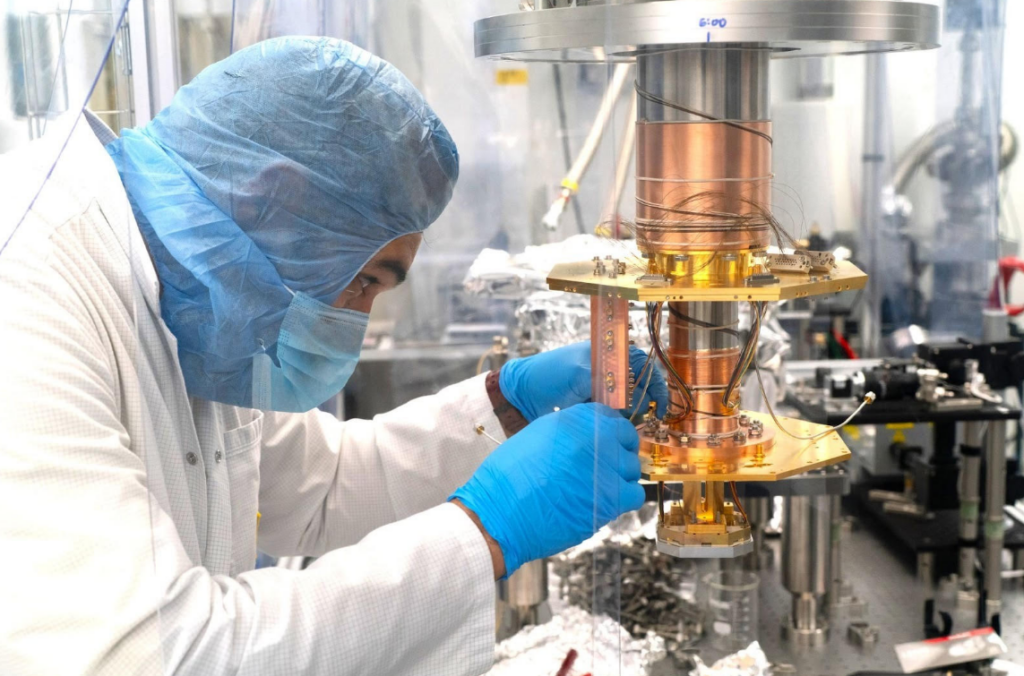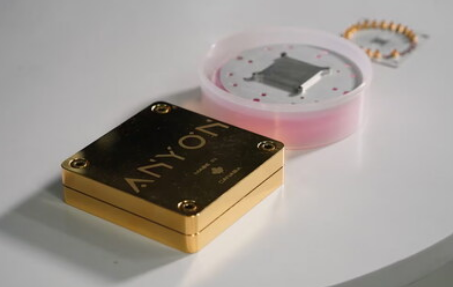Guest Post by Dr. Myles E. Mangram, Founder & CEO of aiDA Technologies LLC
Forget Skynet, killer bots, and the grim prophesies of sci-fi lore—this isn’t that kind of “rise.” While the phrase “Rise of the Machines” may conjure visions of rogue AIs declaring war on humanity, the reality unfolding in today’s computing landscape is both far more nuanced and infinitely more promising. We are indeed witnessing a rise—but it’s the rise of Hybrid Quantum AI Systems, and they’re here to collaborate, not conquer.
This next-gen evolution marks the point where quantum computing steps out of the theoretical shadows and begins contributing tangible value to real-world problems—what we now call Practical Quantum Advantage(PQA). Unlike the early, headline-grabbing milestone of “quantum supremacy,” which was more about flexing quantum’s raw potential, PQA is focused on doing something far more revolutionary: solving economically relevant, scientifically critical problems faster, better, and hopefully cheaper than classical or standalone AI systems ever could.
At the core of this transformation is a new class of intelligent machines—not hell-bent on domination, but brilliantly engineered to team up. These hybrid systems combine quantum subroutines with classical AI pipelines, working in tandem to accelerate breakthroughs in everything from cancer treatment and logistics optimization to cybersecurity and financial modeling.

This article explores how this techno-revolution is taking shape—and why Hybrid Quantum AI is the path forward towards Practical Quantum Advantage.
The Quantum AI Convergence
Quantum AI is the synergistic integration of quantum computing and artificial intelligence. It enhances learning, inference, and simulation capabilities by leveraging quantum phenomena like superposition and entanglement. However, due to the current limitations of quantum hardware (e.g., decoherence, gate noise, low qubit counts), hybrid architectures have emerged as the most viable pathway to achieve scalable Quantum AI.
Hybrid Quantum AI Systems comprise:
- Quantum Subsystems: for solving complex tasks like optimization, sampling, or simulation.
- Classical AI Components: for data handling, training, inference, and integration into workflows.
- Orchestration Layer: dynamically assigns workloads between quantum and classical components to maximize performance.
This model allows for near-term utility without waiting for fault-tolerant quantum computers.
Why Hybrid?
Quantum Processing Units (QPUs) shine at solving certain problems—such as combinatorial optimization, sampling, or small-scale simulation—but classical CPUs/ GPUs still dominate data management, preprocessing, and model orchestration. Hybrid systems coordinate computation across both, enabling scalable, fault-tolerant, and practical solutions.
Progress in Hardware: Enabling the Hybrid Quantum AI Revolution
Recent breakthroughs in quantum hardware are accelerating the transition toward Practical Quantum Advantage (PQA), particularly through hybrid Quantum AI systems that blend quantum acceleration with classical AI infrastructure.
Google’s 105-qubit Willow processor demonstrated error suppression below fault-tolerant thresholds and completed Random Circuit Sampling in under five minutes—marking a shift from experimental supremacy to application-aware quantum utility. Microsoft’s Majorana 1 processor, powered by topological qubits, further advances the frontier. Its inherent hardware-level error resilience simplifies quantum error correction, offering a scalable, fault-tolerant architecture ideal for hybrid integration.
At the same time, Quantum Annealing (used to find the optimal solution to complex problems) continues to deliver value. For instance, D-Wave’s Advantage2 system—available via cloud and supercomputing platforms—has shown measurable gains in optimization and machine learning. D-Waves’ recent demonstration of quantum supremacy in materials simulation using annealing highlights its viability for real-world domains such as drug discovery and logistics optimization.
Hardware convergence is also gaining momentum. NVIDIA, at GTC 2025, unveiled a QPU-GPU interface in collaboration with SEEQC to enable direct integration of quantum processors with AI workloads. Simultaneously, the Harvard-MIT-NVIDIA Quantum Lab is pioneering software-hardware bridges that enhance machine learning through hybrid execution.
Together, these advances signal a pivotal inflection point. Fault tolerance, quantum annealing, and classical-quantum integration are no longer parallel pursuits—they are coalescing into a unified hybrid computing paradigm. This synergy is foundational to building scalable, domain-specific Quantum AI systems with real-world impact.
Software: The Glue of Hybrid Systems
In the rapidly evolving architecture of hybrid Quantum AI systems, software serves as the essential connective tissue—bridging quantum processing units (QPUs) with classical high-performance systems through orchestration, optimization, and learning. Now more than ever, robust software frameworks and intelligent toolchains are transforming theoretical promise into practical functionality.
At the heart of this transformation lies Design Automation for Quantum Circuits, a new generation of compiler technologies that leverage machine learning to automate and optimize circuit execution. These compilers intelligently manage non-commuting gate sequences, apply noise-aware mappings, and reduce gate counts while enabling pulse-level control. This orchestration not only ensures greater fidelity in circuit deployment but also streamlines performance across noisy intermediate-scale quantum (NISQ) hardware. Error mitigation strategies such as dynamical decoupling, once considered experimental, are now fully embedded within software stacks—extending qubit coherence and functional runtime in increasingly complex quantum workloads.
On the machine learning front, Quantum Machine Learning frameworks have matured significantly, offering seamless integration between quantum subroutines and classical AI pipelines. Notably, TensorFlow Quantumallows developers to build and train hybrid quantum-classical models within the familiar TensorFlow ecosystem. By supporting variational quantum eigensolvers, quantum generative models, and circuit simulators, TensorFlow has become a foundational platform for prototyping real-world hybrid inference and training systems.
More recently, a wave of Quantum Machine Learning innovations has emerged from the research frontier. Newly published 2025 frameworks—documented in Cornell University’s arXiv—highlight the integration of quantum computing with reinforcement learning and generative adversarial networks. These hybrid models demonstrate measurable performance gains and signal a shift toward production-grade Quantum AI software pipelines.
Together, these advancements confirm that software is not an afterthought—rather, it is the backbone of the hybrid revolution and a critical component to Practical Quantum Advantage.
Hybrid Quantum AI Systems: The ‘Rising’ Technology Stack
Hybrid Quantum AI systems rely on a multi-layered technology stack that fuses quantum acceleration with classical AI performance. At the hardware layer, leading quantum platforms include IBM’s superconducting qubits, IonQ’s trapped-ion processors, and Xanadu’s photonic systems. These are paired with high-performance classical infrastructure such as Dell Technologies’ AI High-Performance Computing (HPC) systems, NVIDIA’s GPUs, and AMD’s EPYC processors—forming the computational backbone of hybrid architectures.
The middleware and orchestration layer of the technology stack serves as the integrative brain of the hybrid system. Toolkits like Qiskit Runtime, PennyLane, and Microsoft’s Azure Quantum Resource Estimator enable dynamic resource allocation and hybrid workflow management. Key techniques such as zero noise extrapolation, symmetry verification, and quantum-aware compilers optimize performance and mitigate errors across both quantum and classical pathways.
At the application layer, powerful quantum-classical libraries such as QML for Machine Learning, QAOA for optimization, and VQE for quantum chemistry, enable real-world use cases. These are supported by open standards such as the QIR Alliance, OpenQASM3, and ONNX-Q, which ensure interoperability and model portability across platforms.
Together, this stack forms the functional blueprint for scalable, modular hybrid systems—positioning Quantum AI as a practical and transformative computing paradigm.
Key Use Cases Where Practical Quantum Advantage are Emerging
Biomedicine – Quantum AI systems are redefining precision medicine. For example, IBM and Cleveland Clinic’s Discovery Accelerator use hybrid quantum-classical systems to simulate protein-ligand interactions for faster drug discovery. Another example is aiDA Technologies‘ developing Quantum AI Biomedical Systems (Quantum AI-BioS) Platform, which aims to enable personalized radiation therapies for complex cancers by combining quantum-enhanced simulations with AI-based medical decision intelligence.
Optimization & Logistics – BMW + Quantinuum demonstrated quantum-enhanced lithium compound simulations to support advanced electric vehicle battery design. Simultaneously, D-Wave and Volkswagen used quantum annealers for real-time traffic optimization in Barcelona.
Cybersecurity – Quantum AI is showing promise in anomaly detection through unsupervised learning models capable of uncovering rare, high-dimensional threats in encrypted data environments.
Finance & Risk Analysis – Hybrid quantum-classical Monte Carlo algorithms are being tested by Goldman Sachs and JPMorgan Chase for portfolio optimization and derivatives pricing, with early signs of advantage in time-to-convergence.
Bottlenecks & Bridging the Gap
While hybrid Quantum AI systems hold immense promise, several critical bottlenecks must still be addressed to realize genuine scalable, real-world impact.
On the hardware front, current quantum processors—even cutting-edge chips like Google’s Willow—still fall short of achieving universal fault tolerance. Scaling modular quantum systems with high fidelity and strong qubit connectivity remains a significant technical challenge.
In software and algorithm development, compiling efficient quantum circuits that minimize decoherence and gate overhead is far from trivial. Although quantum compilers are improving, many tools are still in early stages. Meanwhile, Quantum Machine Learning remains a nascent discipline compared to classical deep learning, with evolving architectures and few standardized benchmarks.
Human capital and systems infrastructure also pose serious constraints. Relative to this, there is a growing shortage of talent with cross-disciplinary expertise in AI, quantum computing, and high-performance computing (HPC). And, while initiatives like the Texas Quantum Initiative are expanding the talent pipeline, widespread readiness will take time. At the same time, integrating AI, HPC, and quantum technologies into unified workflows requires complex infrastructure coordination—slowing the pace of deployment.
Overcoming these barriers is key to unlocking the full potential of practical quantum advantage in hybrid systems.
Vision 2025–2030: The Hybrid ‘Rise’ Trajectory
Between 2025 and 2026, we can expect a continued surge in practical experimentation across hybrid Quantum AI domains. Early use cases will include quantum generative adversarial networks for drug discovery, reinforcement learning powered by quantum subroutines, and quantum-enhanced solvers applied to real-world logistics optimization. Simultaneously, anticipate broader access to quantum processing units (QPUs) via the cloud and tighter integration of quantum capabilities into mainstream AI development tools.
By 2027 to 2028, intermediate-scale fault-tolerant systems—approaching or exceeding 1,000 qubits—will begin to emerge. These systems will enable hybrid AI pipelines that modestly outperform their classical counterparts in specialized benchmarks, particularly in areas such as advanced materials simulation and chemical modeling.
Looking ahead to 2030 and beyond, hybrid quantum-AI systems are projected to become deeply embedded across industries. Applications will expand into high-impact areas including generative modeling, climate forecasting, and autonomous decision-making. These hybrid models will deliver measurable gains in energy efficiency, sample complexity, and predictive accuracy—reshaping the foundation of enterprise AI and scientific computing alike.
This trajectory signals not just incremental progress with respect to practical quantum advantage, but the dawn of a new computational paradigm built on hybrid intelligence.
Strategic Recommendations for Quantum AI Stakeholders
As hybrid Quantum AI systems move from experimental validation to early adoption, coordinated efforts across research, industry, education, and technology development are essential to fully realize practical quantum advantage.
For Researchers, the focus should be on refining hybrid learning architectures, particularly in generative modeling and reinforcement learning. These systems are uniquely suited to leverage quantum subroutines for enhanced sampling and optimization. Researchers should also contribute to the evolution of Design Automation for Quantum Circuits and the development of scalable, modular Quantum Processing Unit (QPU) architectures—key enablers for long-term fault tolerance and system interoperability.
For Industry Leaders, now is the time to explore QPU-enabled workflows in high-value sectors such as molecular design, supply chain optimization, and autonomous systems. Partnering with quantum providers like IonQ, D-Wave, and Quantinuum for pilot projects will accelerate internal quantum readiness and expose early paths to return on investment.
Governments and Educators must invest in workforce development for Hybrid Quantum AI talent, while simultaneously funding infrastructure that supports classical–quantum–AI convergence in research and innovation hubs.
For Tool Providers, the priority is to create developer-friendly software development kits, intuitive debugging tools, and seamless multi-platform access through cloud-native interfaces. Supporting real-time visualization and hybrid orchestration will be vital for adoption at scale.
Conclusion – The Machines Have Risen (But They’re Here to Help)
So, has the Rise of the Machines finally arrived? Yes—but in this version, the machines aren’t plotting our downfall. Instead, they’re teaming up: quantum processors and classical AI engines are joining forces in hybrid architectures that are beginning to deliver on the long-promised vision of Practical Quantum Advantage.
From Google’s error-suppressing Willow chip to Microsoft’s topological Majorana 1 marvel and NVIDIA’s quantum-GPU handshake, these hybrid systems aren’t just flexing quantum muscles—they’re solving problems in biomedicine, logistics, and AI with increasing precision and power.
While the dream of fully fault-tolerant, universal quantum computing is still over the horizon, hybrid Quantum AI is already proving itself in the real world. And no, it’s not science fiction—it’s happening in labs, data centers, and industry deployments right now.
The bottom line? The machines are rising—but this time, it’s to optimize your supply chain, accelerate drug discovery, and maybe even help humanity tackle a few existential crises along the way.
The future is Hybrid Quantum Computing and it’s looking brilliantly cooperative.

About the Author:
Dr. Myles E. Mangram is the Founder and CEO of aiDA Technologies LLC, a leading-edge developer of Quantum AI infrastructure and platform development solutions with a focus on biomedical, decision intelligence, financial, and data center applications. A serial entrepreneur, technology researcher/writer, and former university professor, Dr. Mangram is a national advocate for Quantum AI ecosystems that unify AI high performance computing systems, Quantum Computing, and clean distributed energy resources. In addition to advanced degrees in business and technology, he holds professional certifications in Quantum Computing (MIT), and AI Strategy (MIT & Wharton).


















